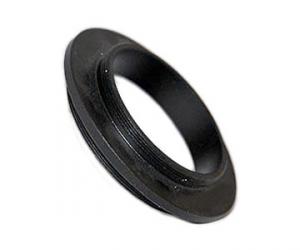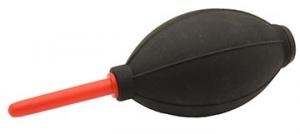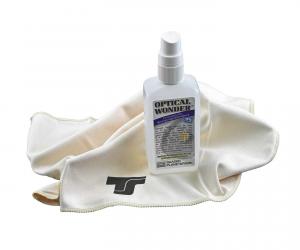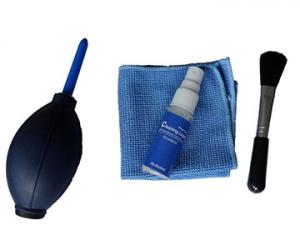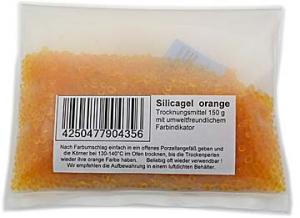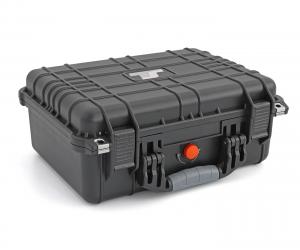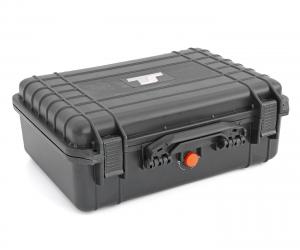- Telescopes
- Overview:
Telescopes - Achromatic Refractor
- Apochromatic Refractor
- Overview:
Apochromatic Refractor - ED Refractor - less color aberration than an achromatic
- SD APO - color free 2-element APO objective
- EDT APO - 3 element ED objective
- High End APO with 3-element APO objective - no color aberation
- Flatfield APO with flat field for Astrophotography
- All Apos and EDs from all manufacturers - large overview
- TS APO and ED from Japan with high quality optics
- Overview:
- Newtonian Telescopes
- Dobsonian Telescopes
- RC Ritchey Chretien Telescopes
- Casssegrain Telescopes
- Reflektor Telescopce with Lens Correcture
- Maksutov Cassegrain Telescopes
- GoTo Telescopes
- Solar Telescopes H-Alpha
- Overview:
- Mounts Tripods Rings Rails Power Supply ...
- Overview:
Mounts Tripods Rings Rails Power Supply ... - Mounts Equatorial with GoTo
- Mounts Equatorial without GoTo
- Mounts Azimutal with GoTo
- Mounts Azimutal without GoTo
- Mounts GoTo - Harmonic Drive
- Travel mounts for astro imaging
- Tripods Piers Polar Wedges
- Mount Control & Electronics
- Dovetail Clamps, Plates and Mount Adapters
- Tube Rings
- Power Supply
- Counterweights Balance Weights
- Mount Accessories - Other
- Overview:
- Telescope Accessories
- Overview:
Telescope Accessories - Eyepieces
- Barlows & Reducer Lenses
- Diagonal Mirrors and Prisms
- Binocular Viewers
- Finder Scopes
- Telescope Collimation and Test
- Cleaning Tools
- Transport and Storage
- Dust protection for Telescopes & Accessories
- Stray Light Protection
- Dewcaps and Heater
- Focusers, Adapters, Motorfocus
- Telescope DIY & Improvement
- Other telescope accessories
- Replacement Parts
- Overview:
- Filters
- Overview:
Filters - Color Filters and Color Filtersets
- Nebular Filters for Visual Observing
- Neutral-Density and Polfilter
- Photo Narrowband Nebular Filters
- Photo Broadband Filters
- Photo Planetary Filters
- Photo R-G-B and IR Cut Filters
- Photo - Filtersets
- Photometric Filters
- Clip Filter for DSLR Cameras
- Filter Wheels and Filterslider
- Solar Filters for white light
- Solarfilter for H-Alpha and Calcium
- Overview:
- Adaptors
- Overview:
Adaptors - Adapter 1,25" and 24,5mm
- Adapter 2"
- Adapter T2 - M42x0.75
- Adapter M48x0,75
- Adapter M54
- Adapter SC
- Adapter M63
- Adapter M68
- Adapter to other Threads
- Adapter Extensions
- Adapter camera bayonet
- Adapter Objective Filterthread
- Adapter Quick Changing , Rotation
- Adapter Eyepiece Projection
- Adapters Tilting
- Overview:
- Astrophotography and Photography
- Overview:
Astrophotography and Photography - Cooled Cameras
- Cameras without Cooling
- Deep-Sky Cameras uncooled
- Set-Offers Camera, Filter, Wheels
- Acessories for Cameras
- Travel mounts for astro imaging
- Imaging Correctors for Telescopes
- Autoguiding Cameras & Sets
- Everything for Guiding
- Focusing aids - Bahtinov mascs
- Flat Field foils and boxes
- Lenses for Cameras
- Piggyback Camera Holder
- Camera Bags, Photocases & more
- Digital Camera and Smartphone Adapter
- Other photo accessories
- Overview:
- Binoculars, Spotting Scopes, Microscopes, Range Finders
- Overview:
Binoculars, Spotting Scopes, Microscopes, Range Finders - Spotting Scopes and Acessories
- Roof Prism Binoculars
- Binoculars with Porro prisms
- Binoculars from 100mm Aperture
- Binoculars with 1,25 inch eyepieces
- TSMX APO Binoculars
- Binoculars for Astronomy
- Binoculars Hiking Bird watching
- Monoculars - Opera Binoculars
- Accessories for Binoculars
- Range Finders
- Microscopy
- Bags for Phototripods & Binoculars
- Overview:
- Phototripods and Binomounts
- Books, Software
- Overview:
Books, Software - Books for Astronomy Beginners
- Star Charts and Planispheres
- Books about our Solar System
- Observing Tips for Amateurs
- Popular Astronomy Literature
- Teaching material
- Astrophotography books
- Telescopes, Observatories, Construction
- Calendars Yearbooks
- Software, Star Charts
- Books for Microscopers
- Books Nature and Animals
- Nature Photography TimeLapse
- Overview:
- Night Vision, Magnifiers, Weather, Domes & more
- Beginner Astronomy and Gift Ideas
- Second Hand & Special Offers
- New products
Manufacturer: QHY Kameras
Product number: MC8C
EUR954.00new
EUR 954,00
incl. 19 % VAT (DE)
The VAT indicated refers to that applicable in Germany. After logging in, the VAT amount is adjusted to the applicable VAT of the stored delivery country. Therefore, the final price may vary accordingly.
excl. 6.95 € shipping costs (DE)
more details to the shipping costs ...Please log in to calculate shipping costs to your country.
There are no reviews for this product
- Details..
- Technical data..
- In the box..
- Manufacturer infos..
- Safety informations..
QHY MiniCam8 - Compact camera with integrated filter wheel
With a diameter of just over 10 centimetres, the miniCAM8 is a compact and powerful astro camera for deep-sky photography as well as high-resolution planetary and lunar photography. The powerful Sony IMX585 is cooled by a controlled Peltier cooling system to up to 45 °C below ambient. The filter wheel holds 8 filters. This allows you to take complete L-RGB and narrow-band images.
High Near-Infrared Sensitivity
The IMX585 is a Sony Starvis II processor that enables high sensitivity and high dynamic range (HDR). It also improves sensitivity in the near-infrared range (at 850 nm) by approximately 1.7 times compared to the IMX485. The new camera miniCAM8 has a maximum quantum efficiency of 60% in the near-infrared band and 92% in the visible wavelength band.
BSI
One benefit of the back-illuminated CMOS structure is improved full-well capacity. This is particularly helpful for sensors with small pixels. In a typical front-illuminated sensor, photons from the target entering the photosensitive layer of the sensor must first pass through the metal wiring that is embedded just above the photosensitive layer. The wiring structure reflects some of the photons and reduces the efficiency of the sensor.
In the back-illuminated sensor, the light is allowed to enter the photosensitive surface from the reverse side. In this case, the sensor´s embedded wiring structure is below the photosensitive layer. As a result, more incoming photons strike the photosensitive layer, and more electrons are generated and captured in the pixel well. This ratio of electron production to incoming photons is called quantum efficiency. The higher the quantum efficiency, the more efficient the sensor is at converting photons to electrons, and hence the more sensitive the sensor is to capturing an image of something dim.
Zero Amplify Glow
miniCAM8 is also a zero amplifer glow camera.
Anti-Dew Technology
Based on almost 20-year cooled camera design experience, the QHY cooled camera has implemented the fully dew control solutions. The optic window has a built-in dew heater, and the chamber is protected from internal humidity condensation. An electric heating board for the chamber window can prevent the formation of dew, and the sensor itself is kept dry with our silicon gel tube socket design for control of humidity within the sensor chamber.
Cooling
In addition to dual-stage TE cooling, QHYCCD implements proprietary technology in hardware to control the dark current noise.
Linearity HDR Mode
The native ADC of the IMX585 sensor is 12-bit. Compared to 16-bit, the 12-bit depth offers fewer bits, resulting in a relatively narrower dynamic range, which may lead to issues such as insufficient color gradation and potential information loss. During the product development of miniCAM8, QHYCCD merged high and low gain to extend the data to 16-bit. However, since this 16-bit depth is not native, a sudden shift in linearity might occur, affecting the smooth transition in images. To address this, QHYCCD developed the "Linearity HDR" mode, which uses an algorithm-based approach to correct image linearity through software, ensuring smoother transitions and richer color representation.
In the "Linearity HDR" mode, the full well is 46 ke-, while the read noise is only 1.0e-; the dynamic range reaches up to 46,300:1, equivalent to 93 dB or 15.5 stops.
Four filters included in the scope of delivery
The filters have 19x12 mm and fit into the filter wheel. LPF (Light Pollution Filter) and HLP (Heavy Light Pollution filter) are nebula filters against light pollution FCE (Four-Channel Enhancement filter) lets through all relevant lines and is a very broadband filter UV/IR blocks UV and IR and lets all lines of the visible spectrum through
Software
There is an all-in-one pack, you can download it here.
With a diameter of just over 10 centimetres, the miniCAM8 is a compact and powerful astro camera for deep-sky photography as well as high-resolution planetary and lunar photography. The powerful Sony IMX585 is cooled by a controlled Peltier cooling system to up to 45 °C below ambient. The filter wheel holds 8 filters. This allows you to take complete L-RGB and narrow-band images.
High Near-Infrared Sensitivity
The IMX585 is a Sony Starvis II processor that enables high sensitivity and high dynamic range (HDR). It also improves sensitivity in the near-infrared range (at 850 nm) by approximately 1.7 times compared to the IMX485. The new camera miniCAM8 has a maximum quantum efficiency of 60% in the near-infrared band and 92% in the visible wavelength band.
BSI
One benefit of the back-illuminated CMOS structure is improved full-well capacity. This is particularly helpful for sensors with small pixels. In a typical front-illuminated sensor, photons from the target entering the photosensitive layer of the sensor must first pass through the metal wiring that is embedded just above the photosensitive layer. The wiring structure reflects some of the photons and reduces the efficiency of the sensor.
In the back-illuminated sensor, the light is allowed to enter the photosensitive surface from the reverse side. In this case, the sensor´s embedded wiring structure is below the photosensitive layer. As a result, more incoming photons strike the photosensitive layer, and more electrons are generated and captured in the pixel well. This ratio of electron production to incoming photons is called quantum efficiency. The higher the quantum efficiency, the more efficient the sensor is at converting photons to electrons, and hence the more sensitive the sensor is to capturing an image of something dim.
Zero Amplify Glow
miniCAM8 is also a zero amplifer glow camera.
Anti-Dew Technology
Based on almost 20-year cooled camera design experience, the QHY cooled camera has implemented the fully dew control solutions. The optic window has a built-in dew heater, and the chamber is protected from internal humidity condensation. An electric heating board for the chamber window can prevent the formation of dew, and the sensor itself is kept dry with our silicon gel tube socket design for control of humidity within the sensor chamber.
Cooling
In addition to dual-stage TE cooling, QHYCCD implements proprietary technology in hardware to control the dark current noise.
Linearity HDR Mode
The native ADC of the IMX585 sensor is 12-bit. Compared to 16-bit, the 12-bit depth offers fewer bits, resulting in a relatively narrower dynamic range, which may lead to issues such as insufficient color gradation and potential information loss. During the product development of miniCAM8, QHYCCD merged high and low gain to extend the data to 16-bit. However, since this 16-bit depth is not native, a sudden shift in linearity might occur, affecting the smooth transition in images. To address this, QHYCCD developed the "Linearity HDR" mode, which uses an algorithm-based approach to correct image linearity through software, ensuring smoother transitions and richer color representation.
In the "Linearity HDR" mode, the full well is 46 ke-, while the read noise is only 1.0e-; the dynamic range reaches up to 46,300:1, equivalent to 93 dB or 15.5 stops.
Four filters included in the scope of delivery
The filters have 19x12 mm and fit into the filter wheel.
Software
There is an all-in-one pack, you can download it here.
| Camera: | miniCAM8 |
| CMOS Sensor: | Sony IMX585 Color |
| Sensor size: | 1/1.2 inch |
| Pixel size: | 2.9 µm x 2.9 µm |
| Pixel arrangement: | 3856*2180 - 8 MP |
| Full Well Capacity; 54 ke-, 46 ke- in Linearity HDR mode: | |
| Readout Noise: | 0.76 - 7.8 e-, 1.0 e- in Linearity HDR mode |
| Peak QE: | R 82 %, G 87 %, B 75 % |
| Dynamic range in "Linearity HDR" mode: | up to 46300 |
| A/D bit depth: | Dual 12-bit (output as 16-bit) |
| Frame rate at full resolution: | 41.5 FPS @8bit, 3.5 FPS @16bit |
| Frame rate at Full HD: | 82 FPS@8bit, 47 FPS@16bit |
| Exposure time range: | 11 µs - 900 sec |
| Entry window: | Anti-reflective coated clear glass |
| Shutter typ: | Electronic rolling shutter |
| Image buffer: | 512 MB DDR3 |
| Computer interface: | USB3.0 |
| Cooling: | Two-stage TEX (Peltier) cooling up to 45 °C below ambient |
| Filter wheel: | 8 positions for filters 19 mm * 12 mm * 1.1 mm |
| Telescope connection barrel size: | 1.25", 2" |
| Thread telescope side: | T2 (M42x0.75) female thread |
| Working distance: | 17.5 mm |
| Weight: | 480 grams |
- Camera
- Adapter M48 to C-Mount
- Adapter 1.25" to C-Mount
- Desiccant tube
- Tweezers for inserting the filters
- Screwdriver
- USB3.0 cable (1.8 m)
- 12 V power adapter
- Mains cable
- 12 V extension cable
- Camera bag
- Driver download instructions card
- Four filter for the filterwheel
- Adapter M48 to C-Mount
- Adapter 1.25" to C-Mount
- Desiccant tube
- Tweezers for inserting the filters
- Screwdriver
- USB3.0 cable (1.8 m)
- 12 V power adapter
- Mains cable
- 12 V extension cable
- Camera bag
- Driver download instructions card
- Four filter for the filterwheel
| Manufacturer / Importeur: | Astrolumina Michael Breite |
| Street: | Alfred-Wirth-Straße 12 |
| ZIP / City: | 41812 Erkelenz |
| Country: | Deutschland |
| Telefon number: | +49 2431 9730725 |
| Email: | info@astrolumina.de |
| Website: | www.astrolumina.de |
Safety informations: PDF Download
Recommended accessories
Adaptors
Cleaning & Collimating
Customers who bought this product also bought...
Photo Acessories
Similar Products
Transport & Covers
TS-Optics Protect Case waterproof hard case - width 407 mm
EUR 54,90RRP EUR 69,00you save 20.4% (EUR 14,10)
TS-Optics Protect Case waterproof hard case - width 470 mm
EUR 69,90RRP EUR 84,90you save 17.7% (EUR 15,00)
Reviews














